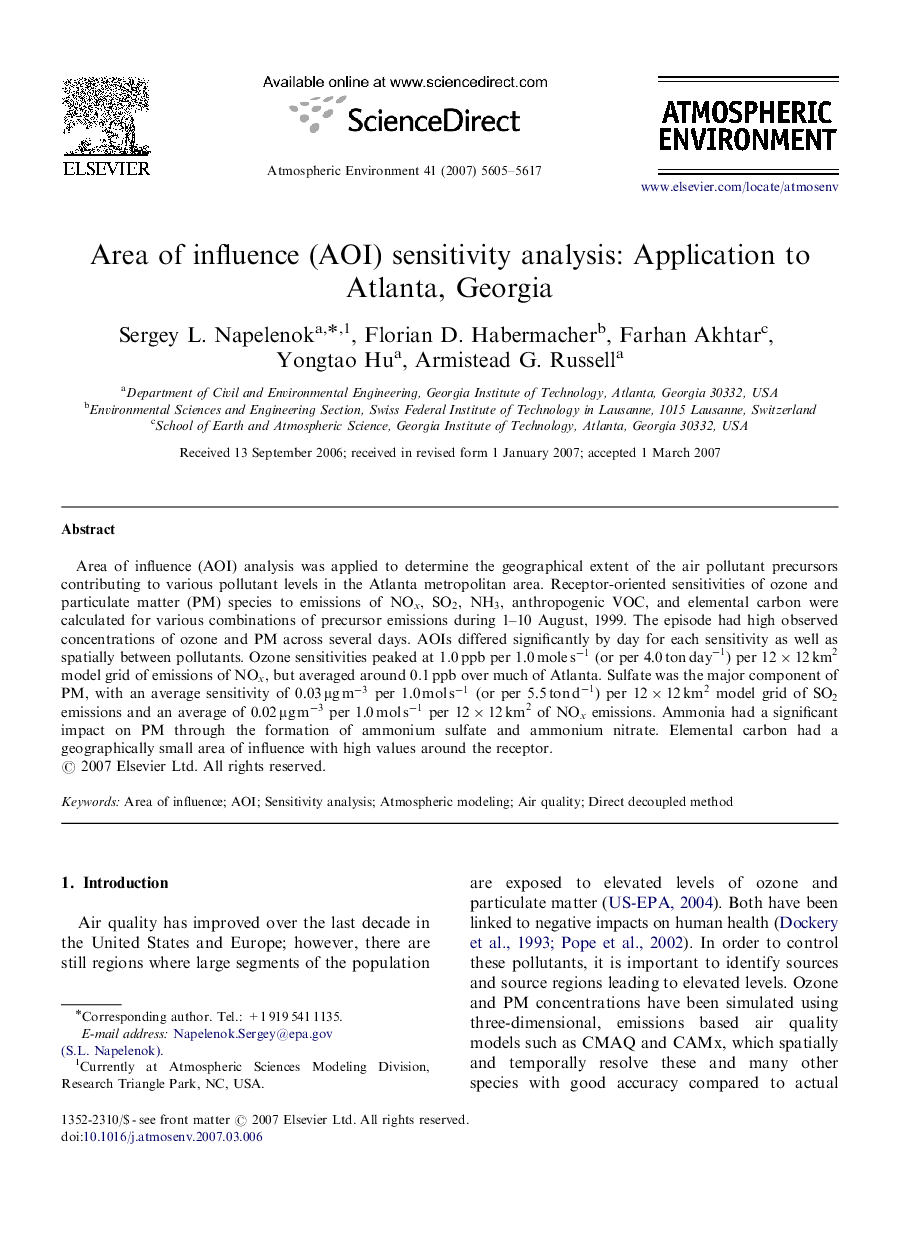| Article ID | Journal | Published Year | Pages | File Type |
|---|---|---|---|---|
| 4443416 | Atmospheric Environment | 2007 | 13 Pages |
Area of influence (AOI) analysis was applied to determine the geographical extent of the air pollutant precursors contributing to various pollutant levels in the Atlanta metropolitan area. Receptor-oriented sensitivities of ozone and particulate matter (PM) species to emissions of NOxNOx, SO2SO2, NH3NH3, anthropogenic VOC, and elemental carbon were calculated for various combinations of precursor emissions during 1–10 August, 1999. The episode had high observed concentrations of ozone and PM across several days. AOIs differed significantly by day for each sensitivity as well as spatially between pollutants. Ozone sensitivities peaked at 1.0 ppb per 1.0moles-1 (or per 4.0tonday-1) per 12×12km2 model grid of emissions of NOxNOx, but averaged around 0.1 ppb over much of Atlanta. Sulfate was the major component of PM, with an average sensitivity of 0.03μgm-3 per 1.0mols-1 (or per 5.5tond-1) per 12×12km2 model grid of SO2SO2 emissions and an average of 0.02μgm-3 per 1.0mols-1 per 12×12km2 of NOxNOx emissions. Ammonia had a significant impact on PM through the formation of ammonium sulfate and ammonium nitrate. Elemental carbon had a geographically small area of influence with high values around the receptor.
